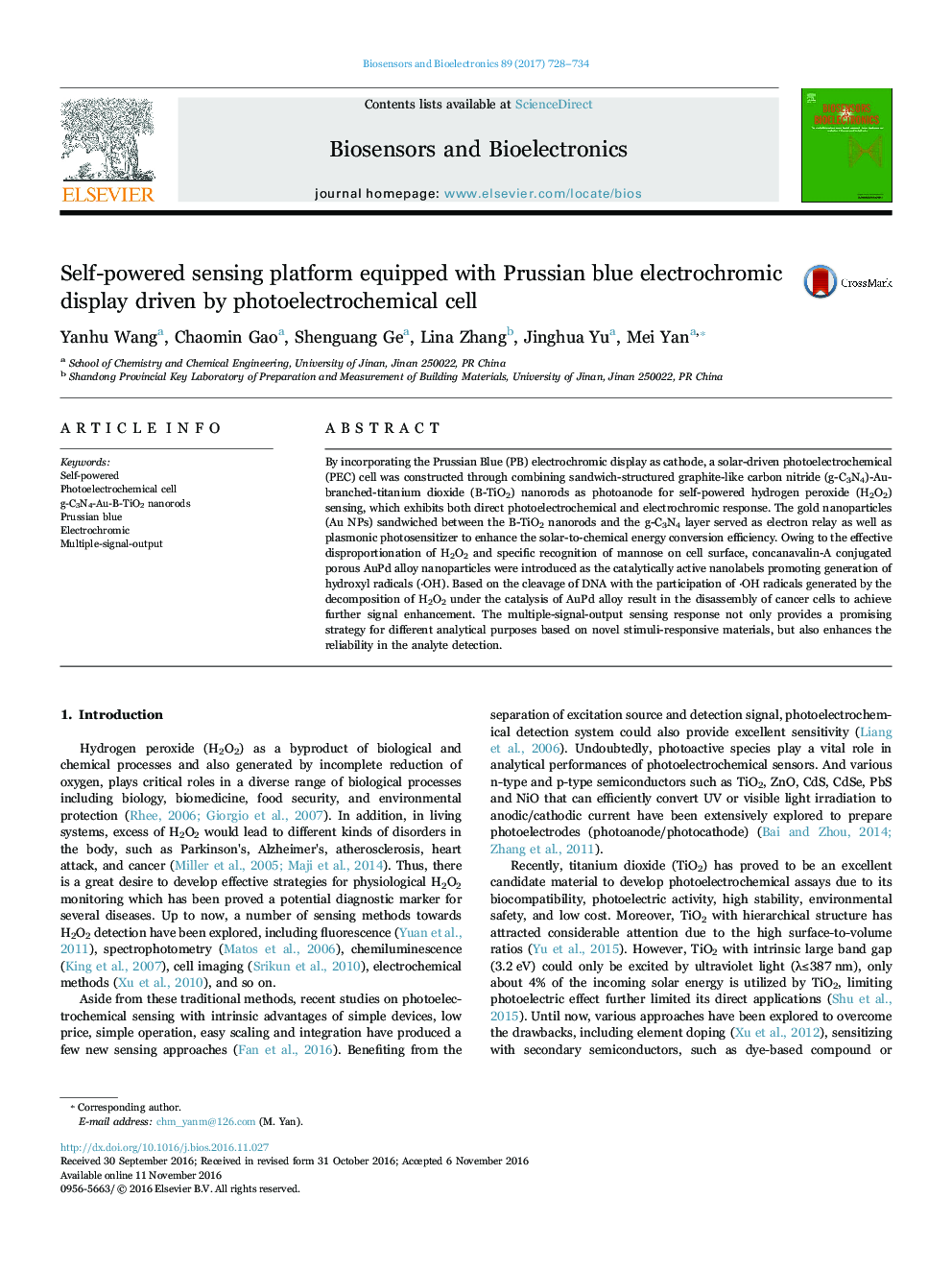| Article ID | Journal | Published Year | Pages | File Type |
|---|---|---|---|---|
| 5031436 | Biosensors and Bioelectronics | 2017 | 7 Pages |
Abstract
By incorporating the Prussian Blue (PB) electrochromic display as cathode, a solar-driven photoelectrochemical (PEC) cell was constructed through combining sandwich-structured graphite-like carbon nitride (g-C3N4)-Au-branched-titanium dioxide (B-TiO2) nanorods as photoanode for self-powered hydrogen peroxide (H2O2) sensing, which exhibits both direct photoelectrochemical and electrochromic response. The gold nanoparticles (Au NPs) sandwiched between the B-TiO2 nanorods and the g-C3N4 layer served as electron relay as well as plasmonic photosensitizer to enhance the solar-to-chemical energy conversion efficiency. Owing to the effective disproportionation of H2O2 and specific recognition of mannose on cell surface, concanavalin-A conjugated porous AuPd alloy nanoparticles were introduced as the catalytically active nanolabels promoting generation of hydroxyl radicals (·OH). Based on the cleavage of DNA with the participation of ·OH radicals generated by the decomposition of H2O2 under the catalysis of AuPd alloy result in the disassembly of cancer cells to achieve further signal enhancement. The multiple-signal-output sensing response not only provides a promising strategy for different analytical purposes based on novel stimuli-responsive materials, but also enhances the reliability in the analyte detection.
Related Topics
Physical Sciences and Engineering
Chemistry
Analytical Chemistry
Authors
Yanhu Wang, Chaomin Gao, Shenguang Ge, Lina Zhang, Jinghua Yu, Mei Yan,
